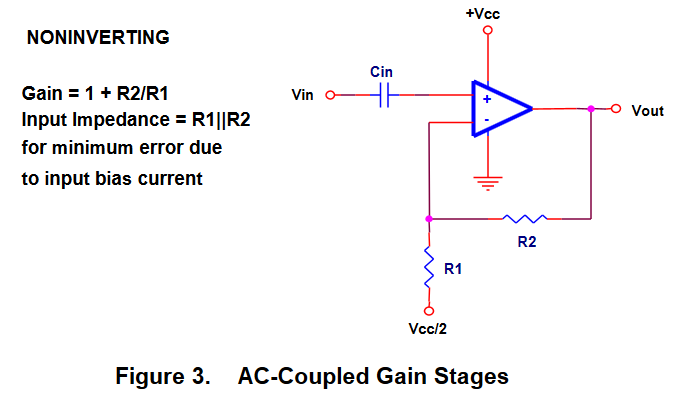Why don't Circuit 1 and 2 work?
Circuit 1:
 I don't get gain of 4 but of about 1 like buffer amplifier.
I don't get gain of 4 but of about 1 like buffer amplifier.
Circuit 2, I just connected R2 to ground and the Vcc/2 generated using R4 and R5 to noninverting input of opamp:
 More mysterious; here the opamp is stuck at vcc.
More mysterious; here the opamp is stuck at vcc.
Circuit 3, similar to circuit 2 but now there is a capacitor between R2 and system ground:
 This one works.
This one works.
EDIT:
OK, thanks for the answers. I want to reach a conclusion now. I conclude that the following circuit from SLOA058 page 6 is wrong:
Since I use a voltage divider to created Vcc/2, this circuit simply will not work. Do you agree? It seems that this application note has wasted a lot of my time.

